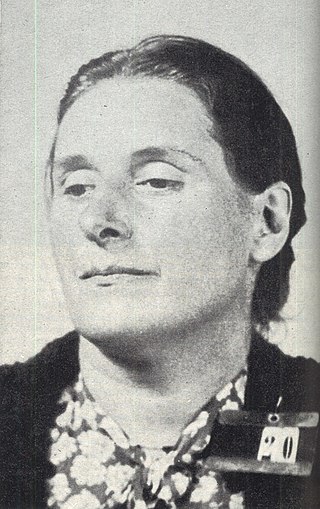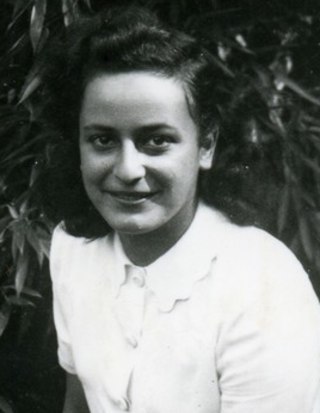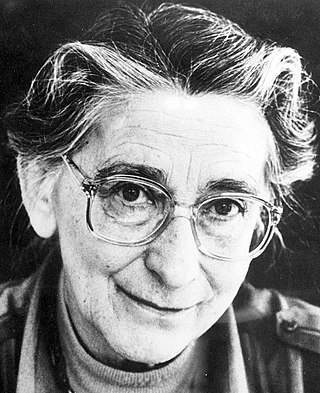Related Research Articles

Camp Westerbork, also known as Westerbork transit camp, was a Nazi transit camp in the province of Drenthe in the Northeastern Netherlands, during World War II. It was located in the municipality of Westerbork, current-day Midden-Drenthe. Camp Westerbork was used as a staging location for sending Jews to concentration camps elsewhere.

Vught is a municipality and a town in the southern Netherlands, and lies just south of the industrial and administrative centre of 's-Hertogenbosch. Many commuters live in the municipality, and the town of Vught was once named "Best place to live" by the Dutch magazine Elsevier.

Arthur Seyss-Inquart was an Austrian Nazi politician who served as Chancellor of Austria in 1938 for two days before the Anschluss. His positions in Nazi Germany included "deputy governor to Hans Frank in the General Government of Occupied Poland, and Reich commissioner for the German-occupied Netherlands" including shared responsibility "for the deportation of Dutch Jews and the shooting of hostages".

Aufseherin was the position title for a female guard in Nazi concentration camps. Of the 50,000 guards who served in the concentration camps, approximately 5,000 were women. In 1942, the first female guards arrived at Auschwitz and Majdanek from Ravensbrück. The year after, the Nazis began conscripting women because of a shortage of male guards. In the context of these camps, the German position title of Aufseherin translates to (female) "overseer" or "attendant". Later female guards were dispersed to Bolzano (1944–1945), Kaiserwald-Riga (1943–44), Mauthausen, Stutthof (1942–1945), Vaivara (1943–1944), Vught (1943–1944), and at Nazi concentration camps, subcamps, work camps, detention camps and other posts.

Esther (Etty) Hillesum was a Dutch Jewish author of confessional letters and diaries which describe both her religious awakening and the persecutions of Jewish people in Amsterdam during the German occupation. In 1943, she was deported and murdered in Auschwitz concentration camp.

Edith Frank was the mother of Holocaust diarist Anne Frank, and her older sister Margot. After the family were discovered in hiding in Amsterdam during the Nazi occupation, she was transported to Auschwitz-Birkenau concentration camp.

Helga Deen was a Jewish diarist whose diary was discovered in 2004, which describes her stay in a Dutch prison camp, Kamp Vught, where she was brought during World War II at the age of 18.

Kamp Amersfoort was a Nazi concentration camp near the city of Amersfoort, the Netherlands. The official name was "Polizeiliches Durchgangslager Amersfoort", P.D.A. or Amersfoort Police Transit Camp. 37,000 prisoners were held there between 1941 and 1945. The camp was situated in the northern part of the municipality of Leusden, on the municipal boundary between Leusden and Amersfoort in the central Netherlands.

Johann Baptist Albin Rauter was a high-ranking Austrian-born SS functionary and war criminal during the Nazi era. He was the highest SS and Police Leader in the occupied Netherlands and therefore the leading security and police officer there during the period of 1940–1945. Rauter reported directly to the Nazi SS chief, Heinrich Himmler, and also to the Nazi governor of the Netherlands, Arthur Seyss-Inquart. After World War II, he was convicted in the Netherlands of crimes against humanity and executed by firing squad.

Adrienne Minette (Mies) Boissevain-van Lennep was a Dutch feminist who was active in the Resistance before being arrested by the Nazis and sent to the Herzogenbusch concentration camp. After the war, she promoted the idea of the national liberation skirt, and some of these unusual skirts are now in Dutch museums.

Hélène Berr was a French woman of Jewish ancestry and faith, who documented her life in a diary during the time of Nazi occupation of France. In France she is considered to be a "French Anne Frank".
Max Michaelis Ehrlich was a German Jewish actor, screenwriter, and director on the German theater, comedy and cabaret scene of the 1930s.

Nieuw Vosseveld is a prison in Vught, Netherlands, part of the Custodial Institutions Agency of the Ministry of Justice and Security within the Dutch criminal justice system. Penitentiaire Inrichting Vught is now the general term used instead of Nieuw Vosseveld. Part of Nieuw Vosseveld is a maximum security prison; it holds some of Europe's most dangerous criminals, including Islamic terrorists Mohammed Bouyeri and Samir Azzouz.

The Holocaust in the Netherlands was organized by Nazi Germany in occupied Netherlands as part of the Holocaust across Europe during the Second World War. In 1939, there were some 140,000 Jews living in the Netherlands, among them some 24,000 to 25,000 German-Jewish refugees who had fled from Germany in the 1930s. Some 75% of the Dutch-Jewish population was murdered in the Holocaust. The 1947 census reported 14,346 Jews, or 10% of the pre-war population. This further decrease is attributed to massive emigration of Jews to the then British Mandate of Palestine.
Hendrika Jacoba "Kiky" Gerritsen-Heinsius was recognized by Yad Vashem as Righteous Among the Nations on 15 September 1989, and was also awarded the Verzetsherdenkingskruis by the Dutch government.

Mathilde Adrienne Eugénie Verspyck "was a brave woman who was a devoted believer in the cause of freedom, for which she later sacrificed her life," according to her U.S. Medal of Freedom award.

Henriëtte ("Hetty") Voûte (1918–1999) was a Dutch Resistance fighter who was declared Righteous Among the Nations by Yad Vashem on 24 March 1988 for her work rescuing Dutch Jewish children whose parents had been deported to Nazi concentration camps during World War II.

Selma van de Perre-Velleman is a Dutch–British resistance fighter. During the Second World War she worked as a courier, a term that at the time acquired a specific connotation as "messenger of the resistance".
References
- ↑ "The hidden story of Rosa Glaser". Historiek.net (in Dutch). 28 April 2010.
- ↑ Paul Glaser. Dancing with the Enemy. Randomhouse Penguin. pp. 180–182.
- ↑ Lothar, Corinna (2021-07-28). "BOOK REVIEW: 'Dancing With the Enemy'". The Washington Times . Washington D.C.
- ↑ "Trailer reprise". Dutch theater play (in Dutch).
- ↑ "Trailer the Dancer of Auschwitz". Choreography Theater Play (in German).
- ↑ "Exhibition, book and theater". National Monument Kamp Vught. March 7, 2016. Archived from the original on 19 October 2017.
- ↑ "Trailer Exhibition". Exhibition (in German).
- ↑ Roosje Glaser. "Roosjes diary in depot Museum Herzogenbusch Concentration Camp".
{{cite journal}}: Cite journal requires|journal=(help) - ↑ "video archive". Roosje Foundation.
- ↑ "Rosies wartime experience". Roosje Foundation.
- ↑ "Dancing teacher betrayed for running wartime school". Jewish Telegraph. April 24, 2015.
- ↑ Dr J.Presser (1965). Ondergang, vervolging en verdelging Nederlandse Jodendom 1940-1945. pp. 452–459.
- ↑ "Rosie, che si salvò insegnando il foxtrot alle SS di Auschwitz". Corriere della Serra (in Italian). January 17, 2014.
- ↑ "Im Walzerschritt gegen den Tod. ". Neues Deutschland Author: Boris Gruhl (in German). April 11, 2016.
- ↑ "Joodse Roosje bluft zich door concentratiekampen heen" (in Dutch). Brabant Dagblad. April 24, 2010.
- ↑ "Ballando ballando zia Rosjie usci viva da Auschwitz.". La Stampa (in Italian). January 20, 2014.
- ↑ "Dansen met Duitsers". Kleio, Dutch Journal for History Teachers (in Dutch) (2016 nr.4): 70–71.
- 1 2 Paul Glaser. Dancing with the Enemy. Random House Penguin. p. 263.
- ↑ "See photoalbum Roosje in depot Museum Herzogenbusch Concentration Camp".
- ↑ Paul Glaser. Dancing with the Enemy. Random House Penguin. p. 235.
- ↑ Paul Glaser. Dancing with the Enemy. Randomhouse Penguin. pp. 278–279.
- ↑ Paul Glaser. Dancing with the Enemy. Randomhouse Penguin. pp. 269–271.
- ↑ "De keuzes van tante Roosje" [the choices of aunt Roosje]. Kleio, Journal for History Teachers (in Dutch). 2018 nr. 2: 49–53.
- ↑ Author: Andreas Gebbink. (September 24, 2015). "Eine starke Frau". NRZ Kleve (in German).
{{cite journal}}:|author1=has generic name (help)